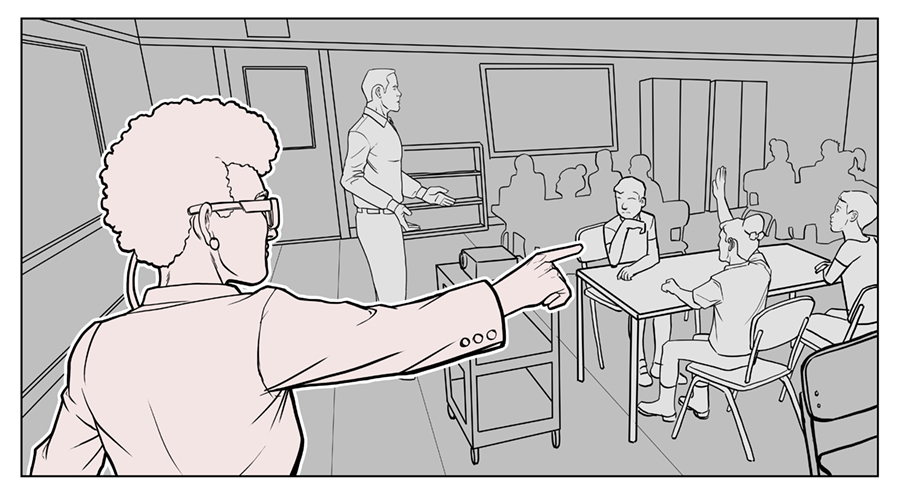Virtually Returning to the Real World by John O'Neill
Posted on April 1, 2021

Virtual reality is an immersive engagement solution, and the interaction is beneficial when training attention and focus to presentation details is desirable. However, it does completely remove the subject from any form of real-world communication and human interaction, and collaboration in the virtual space is artificial at best. In our experience working with subjects over the past several years in the ECU i4 project, the separation of teacher and learner from the subjects in a classroom environment introduces an element of error when attempting to record interactions.
Augmented reality can bridge the gap with an overlay of information without disrupting the normal real-world flow of engagement with participants. AR is a general term for any technology that superimposes virtual information onto the real-world, using special glasses, helmets, or projection technology. There are hundreds (if not thousands) of hardware and software vendors creating solutions to serve the needs of both consumers and business in the AR space. The advancements in this technology are addressing the usability needs by making devices more lightweight without sacrificing the processing power required to drive the display of artificial information to the user. Design aesthetics that are also in being solved in the current generation of AR devices are moving the bulk of the device processing unit to a smaller form factor, as well as bring the "natural" glasses as an augmentative device into the price range of a usable testing device.
User interaction in AR can be performed using a combination of hand control devices (like a laser pointer clicker) as well as gesture recognition for a hands-free approach to interactions.

Some AR hardware can track the positions of the user’s eyes and use this information for analytics tracking to store what was viewed in the real-world and allow for advanced interface interactions by responding to where the user is gazing in the environment. This additional level of analytics can serve to provide a deeper understanding of not only areas of engagement, but patterns of information between the same participant or aggregated between a group of subjects.
Initial tests are already underway to migrate and experiment with leading AR solutions for the i4 project, with the goals of continuing the flexibility and future scalability of selected solutions.